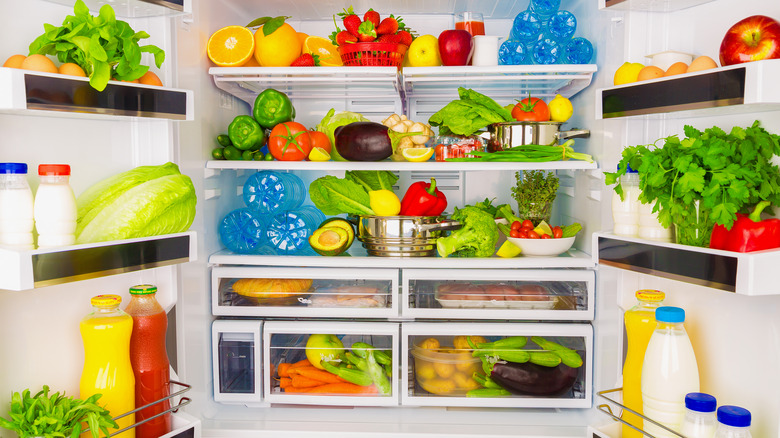Why Your Fridge May Not Be As Cold As It Should Be
Looking for something to be grateful for? Consider the humble refrigerator. Before the University of Glasgow's William Cullen invented artificial refrigeration in 1746, Fridge Filters notes the only way to keep perishable food from going bad was by packing it in ice and hoping for the best. Those with the space and wherewithal relied on ice-houses, underground buildings that were kept cold using actual ice, along with straw or sawdust for insulation, according to History of Refrigeration. Icehouses were so effective at cooling that they would "stay frozen for months, even until the following winter." But therein lies the rub. While storing perishables in a room cooled by actual ice went a long way toward keeping those perishables safe for consumption, there was also no reliable way to control the temperature.
In other words, you'd be forced to store your homemade ice cream at the same temperature as your freshly butchered pork chops — despite the fact that ice cream should be stored at zero degrees Fahrenheit or colder according to the International Dairy Foods Association, while raw meat should be kept at anywhere from 28 to 32 F (via American Meat Science Association). Fortunately, today's refrigerators allow you to modulate the temperature for your own needs. Of course, that raises the question, how cold SHOULD you be keeping your fridge? The answer just may surprise you.
Your refrigerator may be too warm
"If you want to stay food safe and stop harmful bacteria from growing," the UK-based Food Standards Agency posted to Twitter, then you should be keeping the temperature of your refrigerator at or below 5 degrees Celsius (which is about 40 degrees F). The U.S. Food and Drug Administration agrees, and recommends using an appliance thermometer to periodically check your fridge's temperature. If you don't have an appliance thermometer, Onsite Appliance says you can accomplish the same thing by placing a cup of water with a meat thermometer inside your refrigerator for two hours and then checking the temperature. If you find that your fridge isn't as cold as it should be, it's advisable to "address the problem immediately to keep your perishables from going bad," according to Aviv Service Today, which went on to identify some of the most common reasons why.
First, it could be that you inadvertently changed your fridge's temperature setting. That, of course, is an easy fix. You could also have something blocking your refrigerator's air vents. That's also an easy fix. If neither seems to be the problem, then you may need professional assistance because you may be looking at a broken fan, a dysfunctional control board, or a dirty condenser coil.

